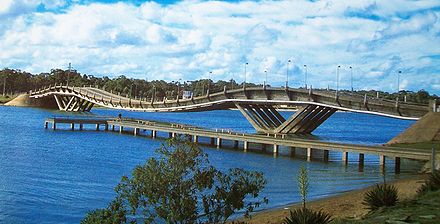

If I’m going to write it for class, I might as well write it for everyone…
During the week in Uruguay and Argentina I learned a lot about academics, the countries and their governments and economies, and especially the people.
The first striking thing was the purchasing power of the US Dollar in both countries. Given that both countries are developing (at different points), I would have expected to have good purchasing power. That was not the case. Food generally cost the same amount as it does here in the states. In fact, if you look at the Big Mac index for both countries, a burger in both countries is about 20% more expensive than one in the United States (after being converted to current USD).
On monetary policy, it is also surprising that the countries hold similar purchasing power parity. Montevideo is certainly less developed than Buenos Aires and the countries are of different size. But also, the Uruguayan government seems to be enabling growth of their economy. They have multiple free trade zones where the Argentine government is enacting arbitrary rules that would make the country less attractive to do business in. For examples, not being able to buy foreign currency for things like dividend payouts and having to balance imports and exports. Despite not being able to easily exchange money or trade between the two neighboring nations, their values of the currencies are very similar when compared to the dollar.
The point about the governments is not only a monetary one. The impression that I got from Uruguay was “entrepreneurial”. One thing that majorly contributed to this was Plan Ceibal. They distributed the first OLPC laptop in 2007 and had complete rollout done by 2009 with direct endorsement through two presidential regimes. They don’t deal with the department of education often, work very well with the national ISP to wire internet to places that don’t even have power, and they do not worry about getting outside funding from donors. This company and the Uruguayan government sounds more ideal than most case studies I’ve read.
The impression I got from Argentina was “bureaucratic, unstable, and corrupt”. Quite a contrast. Argentina would never support an initiative like Plan Ceibal. Speakers on the first day explained to us that government support is extremely short term and almost nothing makes it through two presidencies. Not only that, but the president can do nearly anything thanks to vetoing and assumption of power of congress precedents. The judicial branch is blackmailed, congress members get “promoted” to governor positions. If that isn’t enough, the longest consistent government rule is the current one, which is going on 29 years. The contrast between the two countries monetarily and governmentally is pretty extreme, which is interesting because from the US perspective the dollar buys the same trinkets in both places and they’re both “Latin American”.
There are very interesting cultural differences between the two countries and the United States. The first that comes to mind is the orientation around food and meals. In both countries they spend hours eating both lunch and dinner, which are both almost always meat-based. In the United States, and in most other places I’ve traveled (Hong Kong as a perfect example) this is not the case. A long US meal is hard to come by. We are busy people and often the meal gets tied with family time, of which in many households (including mine) we often take for granted and doesn’t last long. In Hong Kong, most meals seemed to be disconnected from family time and were part of the normal working day. That meant they needed to be quick, like most other things in the bustling city. In Uruguay and Argentina, there was absolutely no rush. The meal was about the people and your experience of spending time with them and no time is too long, for both lunch and dinner. Based on the meals we had, I think the main differences between the neighboring countries are that Uruguayans a longer time eating while Argentines like to eat meals later. The extra time the Uruguayans spent eating could be explained by their even higher pride for what they were serving. The experience wasn’t just about the people, but also about the food itself. Both countries loved their food, but we just couldn’t stop hearing about the “best meat in the world” in Uruguay.
In most other cases, Argentines were full of themselves and not afraid to say it. During the Alumni dinner in Buenos Aires, I had two alumni constantly making jokes about the Argentine ego. “You know the best business in the world? Buying Argentines for what they’re worth, and selling them for what they say they’re worth.” Another alum spent ten minutes telling us a story about one of his interactions with the President where he spoke badly of a government plan after an international conference and the President’s office blackmailed him and banned him and his well-known family from all government events for the rest of his life (or, more likely, for the rest of the presidency). He was even proud of this. Says a lot about ego!
Another interesting cultural difference centered around gifts. After each presentation, Heather gave us a pen to give to the guest speaker. A nice OIP gesture, of course. The interesting thing was that almost every guest speaker opened the gift on the spot. Most Americans find that rude. (First I assumed that everyone was like me, then I asked my friends. They agree.) In Uruguay it seemed to be a universal rule to open gifts on the spot and with enthusiasm. In Argentina, it seemed to be more of a case by case basis, but most of the speakers tentatively opened them anyway. I’m not sure what causes this difference in cultures. A small but very interesting observation.
The drive through Punta del Este was also packed with interesting observations. First, going back to my first point, we heard early on that rent in some of the apartments on the beach is two times the price of that in Miami. While this is somewhat speculative, the economy is certainly developing in that area and I was shocked to hear just how expensive things have become. I also via heard students that the street vendors take their same trinkets to Punta and they charge twice as much for them.
The other crazy Punta del Este observation was an example of great design resulting from a difficult design challenge. The apartment complexes with the glass first floors around the area looked very futuristic. And we were enlightened by an astute man that they were built this way because they were regulated against blocking the ocean views. Reminds me of a design challenge in Boston: We want to make a new skyscraper but we’re putting it in an area with lots of old, historic buildings. I know! Let’s make it reflect the image of the buildings around it! (And the Hancock Tower was born). In both situations, great works of architecture were created, perhaps better than they would have been without the design constraints.
The other great design was the Maldonado Bridge. The first one of its kind, this stressed ribbon bridge feels just like a roller coaster when you drive over it, looks awesome, and after adding another one just like it (one for each direction), supports the traffic going to and from Punta del Este and La Barra. The bridge is a very simple one, using concrete and its own shape to reinforce itself and provide support passing over it. Again, it comes back to Boston (the Zakim Bridge is the widest of its Cable-stayed bridge kind).
The last overall theme of my journal was about the Spanish language. I have not taken a single lesson of Spanish since senior year of high school (about four years ago) where I took up to level 4. For some reason, I can still conjugate quite well, including irregulars in lots of tenses. I never had a problem with that in high school either. What I did have a problem with was remembering the vocabulary words from each chapter. And the number one impediment to me speaking Spanish in either country was just that - not knowing the vocabulary. Because of this (I thought) I was never good at those darn listening sections during class. I can read, but I can’t process things fast enough when people speak. I think too much!
This trip was a different story though. On the flight and during the beginning of the week (especially at Hotel Europa) I had to use Spanish quite a bit to get by and it was working well enough. I could actually listen to a sentence, pick out the words I remembered and respond. I was really excited as I had finally reached a useful point for those four years of language, just about four years later. As the week went on, I refreshed myself on grammar, some vocabulary that I was confused about throughout the day when I had wifi (like “por accá”), and some local conventions. Then somehow by the end of the week, I was back to Spanish class - over-thinking everything and missing the point of the sentence. I learned one of two things: I either need to get to the other side of this gap and become fluent, or stick to the stupid side where I know just little enough that I stop thinking. I think I’ll strive for the former.
The most striking “is this real life?” moment on the trip was the Tango show in Buenos Aires. First of all, going back to the meals point, it was a long night. But when the show started, I turned to the stage and thought… I feel like I’m in a movie or something. I’ve never eaten a meal and turned to watch an exotic show (ok it’s exotic to me, I’m new to the continent) happening in front of me. I looked around and saw an older, upper class crowd. I realized just how lucky I was to be there and just how surreal the experience was. To top it all off, a woman with a beautiful voice sang “Don’t Cry For Me Argentina” in Argentina (in Spanish). This brought the whole experience (and apparently its reflection) full circle.
